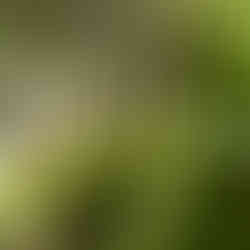by Jeanne McRight and Pamela Sleightholm
We’ve all seen the beautifully blooming butterfly bushes at the nursery and the zinnia, roses and sedum that are covered in bees in the summer. Still, there may be even better native plant alternatives just as beautiful.
The spicebush swallowtail is a specialist butterfly native to the Carolinian Forest zone. Rare in the Toronto area, its caterpillar's survival depends on spicebush and sassafras hosts plants. Photos: Flickr
What do native plants do for pollinators that ornamental species don’t?
Co-evolutionary adaptation and mutualism
When both species benefit from their interactive relationship, it's called mutualism.

During their 350 million year co-evolution, many native plant and insect species have developed relationships that benefit one or both species. Native plants offer rewards such as pollen proteins and nectar sugars that match their insect partners' nutritional needs. As well, native pollinators have characteristics that enhance their ability to extract these rewards. For example, the long proboscis of some butterflies and moths, and the long tongues of some bees are adapted for extracting nectar from flowers with tubular flower structures such as wild columbine, bee balm and wild bergamot. The plant, in turn, benefits from the insect's pollination services, enabling it to reproduce.
Host plants and insect specialization
Generalist insects are able to use pollen and nectar provided by many different plant species. A lesser number of insects are specialists - they only feed on a limited number of plants, usually those from just one genus. Those are the host plants. Without the host plants they depend on for food, the specialist insects must either adapt or die.
Insect specialist: 1) Black swallowtail caterpillars only eat plants from the carrot family such as this native host, the spring-blooming Golden Alexander (Zizia aurea), Left: photo ©2021_Peeter Poldre; Center: photo©2021 Jeanne McRight; Right: photo© 2018 crgillette77
Symbiotic relationships
Symbiosis is a close relationship between two species in which at least one species benefits.

A familiar example of a symbiotic insect-plant relationship is the monarch butterfly, a milkweed specialist, and its milkweed host plants. Monarchs caterpillars eat only milkweed leaves and are able to metabolize a toxin in the leaves, protects them from predation. They sever the midrib of the leaf, cutting off the flow of the poisonous latex sap that would otherwise glue its mouth shut. Milkweed suffers the damage to its leaves in exchange for the pollination services the adult insects provide. The monarch butterflies enjoy the nectar from the flowers and help pollinate the plants. In a season, four generations of monarchs are produced. Successful pollination allows the milkweed to thrive and thus provide more nurseries for the crucial ‘fourth generation’ of monarchs - those that migrate south in the fall.
Milkweed is a broad-leafed native plant that is used by monarchs as their only nursery.(Asclepias syriaca – common milkweed – and other native milkweeds such as butterfly milkweed and swamp milkweed (above) are equally monarch-friendly). Without the milkweed, the caterpillars would die – but Ontario put milkweed on the noxious weeds list which forced its eradication.
The impacts of invasive plants and habitat loss
Unfortunately, there are no substitutes for where monarchs can lay their eggs.
An invasive European swallowwort vine, a.k.a. ‘dog-strangling vine‘ (Vincetoxicum rossicum) is taking over many meadows and grasslands. It’s without predators in North America and proliferating at an astounding rate. It mimics the native milkweed in many ways – but cannot sustain monarchs. It fools the monarch adults into laying eggs on it but the larvae starve since there is no nutritional value to its leaves. Nor does it provide nectar to the adults. Countless thousands butterflies die before they can ever become caterpillars or take flight.
As well, unsustainable agricultural practices, development, droughts and wildfires have destroyed the natural habitats where milkweed once grew abundantly. No milkweed. No caterpillars. No monarch butterflies.
Extirpated in Ontario: the Karner Blue
Left: Male Karner blue resting on grass leaf. Photo by Paul Labus, The Nature Conservancy, Indiana. Center: High Park's black oak savannah lupines. Photo: Keran Yukich. Right: Gathering wild lupines in High Park, 1918. Photo: John Boyd. National Archives of Canada. PA071052
The Karner Blue (Lycaeides samuelis) lays eggs on the Wild Lupine (Lupinus perennis). The larvae of the Karner Blue feed off of the plant. Ants that also use the plant protect the egg from predators (spiders, beetles). In the past, habitats of this butterfly have been described as “a sea of blue”, the entire region would be covered. Wild lupine prefers a sandy soil and oak savannah, so this flower, and these butterflies are narrowed to a specific ecosystem. The Great Lakes once flourished with both, but since the 1980’s, there have been no sightings of the Karner Blue Butterfly in the wild. Habitat loss across North America has caused a decline of up to 99% of wild lupine and thus, the Karner Blue. Restoration projects such as that in High Park are trying to increase lupine habitat in hopes of bringing back the Karner Blue.
How you can help
Increasing numbers of host plants and specialist insect species have greatly reduced populations and are now at risk of extirpation. By shifting to more ecologically friendly gardening and farming methods, we can reverse the dramatic loss of specialist insects.
Planting native host plants to support specialist insects will increase biodiversity in our gardens.
To learn more about specialist insects and the host plants they need, check out this page from Carolinian Canada.
More related resources:
Black Oak Savannah and Woodlands in High Park



















Comments